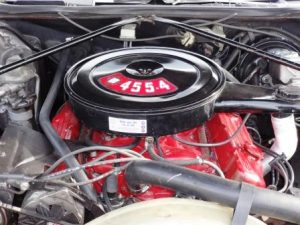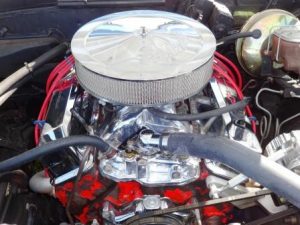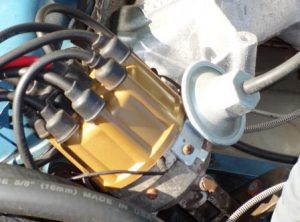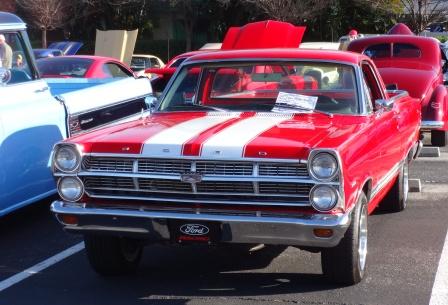
Find common classic car repairs across a variety of year, makes and models. See if your problem made the top 3 list. The need for classic car repairs becomes a major reason we call this sport a hobby. Not only do we get to attend car shows and spend time around the automobiles we love, but we also get to work on them. It’s funny how auto repair problems on our daily transportation aggravate and frustrate. However, when the beloved classic car in the family requires repairs they become something completely different.
When vintage automobile owners perform classic car oil changes and repairs it’s often in a comfortable setting such as the garage or driveway. Along with the necessary tools and planning for the automotive project, you’ll often find a beer and a boom box. Once again, this is why we call it a hobby. With that said, it seems that certain classic car repairs remain a common occurrence on decade’s worth of automobiles. Here we’ll discuss a few that you can just about guarantee you’ll have to do at some point in the ownership cycle. We’ll also include a modern twist to the repairs that increase the longevity of these fixes.
Classic Car Engine Oil Leaks

One of the most common classic car repairs falls into the oil leak category. If you have a vintage automobile you probably have spots in the driveway to prove it. Many people don’t realize the major improvement in engine oil sealing technology found in modern automobiles. I’m not just talking about composite and silicone gasket technologies. Modern engine design includes fewer areas for oil to leak from by design.
One of the most common engine oil leak areas on any classic car comes from the valve cover gaskets. Leaking in this area stems from a few old school design flaws. The first becomes the material they made the gasket out of. Court gaskets harden and deteriorate over time. These remain the most common sealing materials found throughout a vintage engine. However, additional factors make solving a valve cover oil leak more challenging.
Of course, we’ll have the opportunity to use improved technologies in the replacement gaskets. Many vintage car owners quiver at the idea of using bright orange silicone gaskets. Although these would last the longest we can use a rubberized, black composite valve cover gasket in a classic car application. This gives us the latest sealing power coupled with a vintage look.
The other challenging issue comes from the retainers used to hold the valve cover against the cylinder head. The thin steel construction of classic car valve covers becomes an area of weakness over time. Therefore, checking the straightness of the sealing surface on the valve cover side becomes critical to preventing the recurrence of the oil leak. In addition, aftermarket manufacturer’s offer specialized valve cover hold down tabs. These distribute the down force of the retainer across a larger surface area. With the improved gasket design and retainer technology, these oil leaks won’t return anytime soon.
Classic Car Coolant Hoses
Nothing can ruin a day intended for participation in a classic car show than a blown coolant bypass hose. The bypass hose on many models sends coolant from the water pump directly to the engine, bypassing the radiator. With that said, any black rubber hose carrying engine coolant in a classic car engine compartment can fail without warning. Rubber doesn’t age well. Exposure to heat accelerates the rate of decay. In other words, they become brittle and develop cracks. In addition, the standard green ethylene glycol antifreeze used in a classic automobile also doesn’t age well.
The engine antifreeze turns acidic over time and physically eats away at the inside lining of the coolant hoses. Classic car owners can do a few things to prevent unexpected failure. They make engine coolant test strips that you dip into a cold radiator. These tell you when it’s time to service the antifreeze. In addition, we can do the squeeze test on all of the rubber hoses in the engine compartment. If they crackle or they don’t feel supple when squeezed, then it’s time to replace them.
Additional Classic Car Repairs

As we mentioned in the previous section black rubber hoses just don’t age well. The classic car has quite a few vacuum operated accessories controlled by vacuum hoses. Not only can these hoses deteriorate over time they also become porous. When this occurs, they fail to supply the necessary vacuum to that individual accessory.
A good place to start a vacuum line inspection starts at the base of the carburetor. Vacuum hoses stemming from the carburetor feed accessories like the power brake vacuum booster. In addition, hoses can also feed the PCV valve and the vacuum advance of the distributor. However, an often missed vacuum hose is the one that supplies a vacuum signal to the choke pull off on many classic car carburetors.
When this small hose leaks it can prevent the choke from completely disengaging. This can cause a multitude of carburetor related problems including poor fuel economy and a lack of power. A broken vacuum line that feeds the vacuum advance of a classic car distributor also causes these same exact symptoms. Inspecting all the vacuum lines on a regular basis remains a worthwhile use of time.
There’s an additional area inside the classic car where the vacuum lines become an issue. The air conditioning on an older automobile includes many vacuum operated components. These classic HVAC systems include vacuum diaphragms that operate the temperature and blend doors. The heater and AC control panel receives a vacuum signal from the engine compartment. It then distributes suction to these control devices.
To make a long story short, when you look under the dash of a classic car you’ll find a bunch of old vacuum lines. These often overlooked antique rubber hoses also require a complete inspection on a regular basis. Thankfully, in many cases you can hear them hiss inside the passenger compartment when they begin to leak. With that said, they only hiss with the engine running and many popular classic cars have overpowering exhaust noise that can cover up these issues. Learn more about cars on the Motorera Blog.

